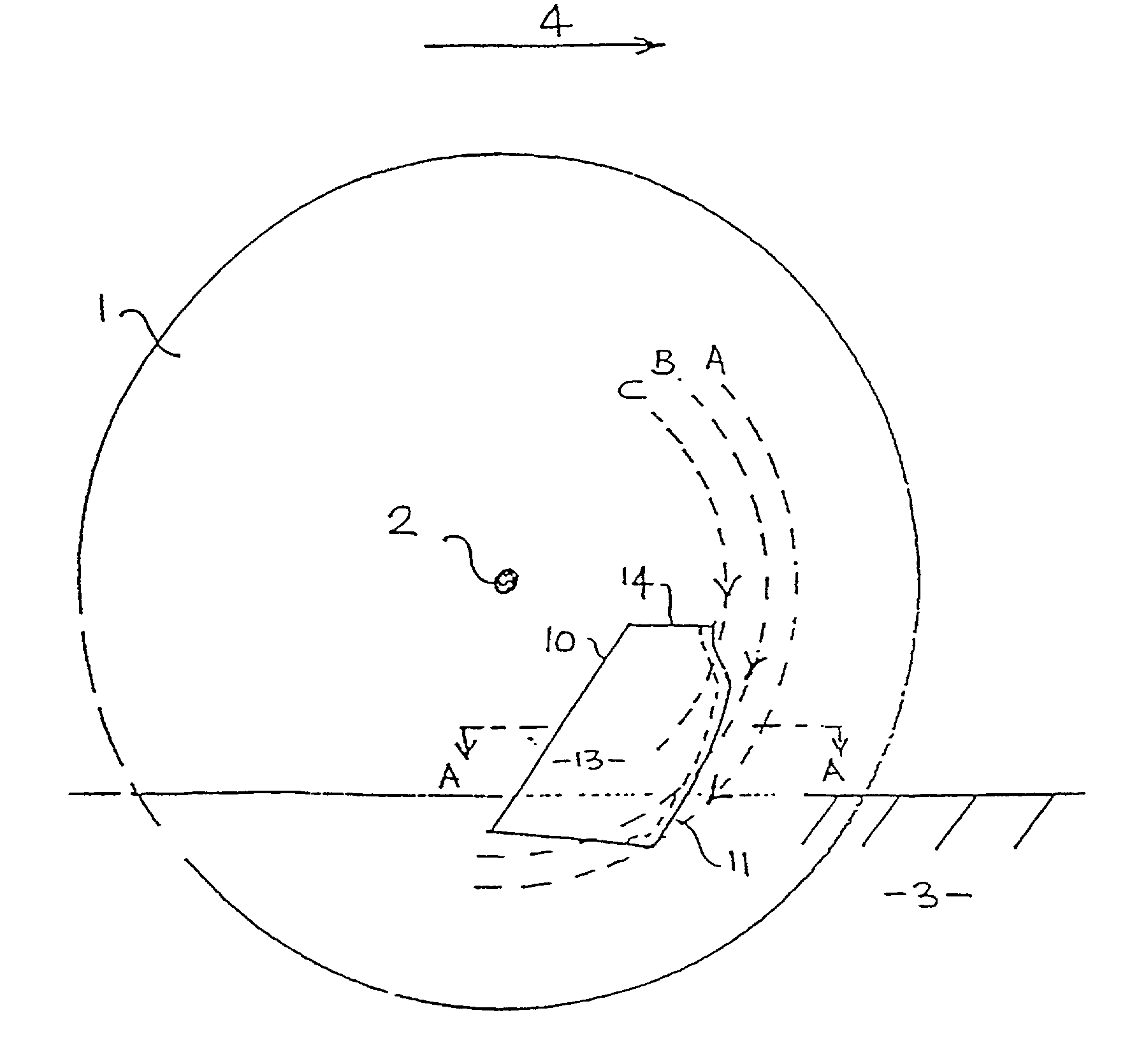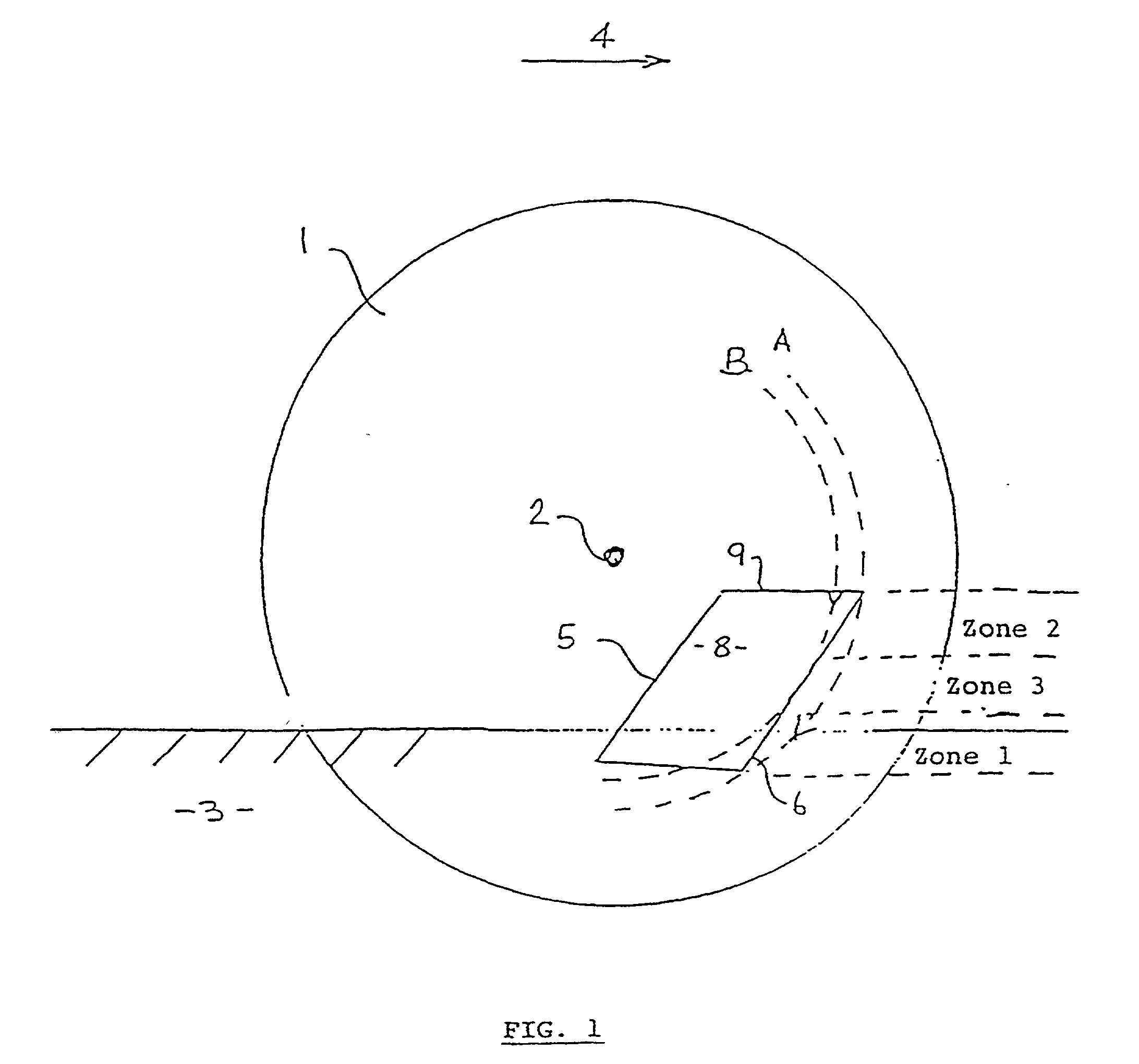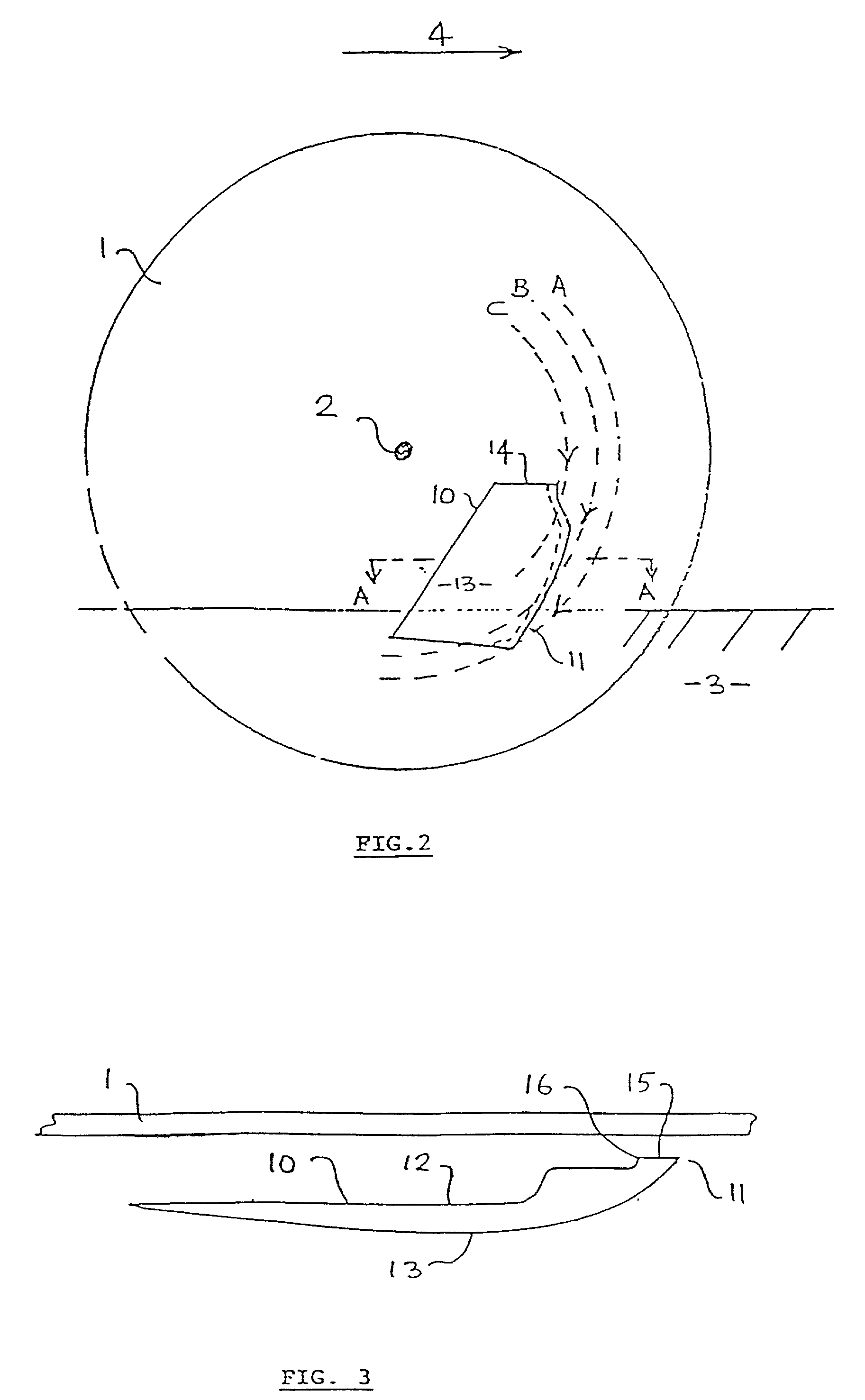This is an important feature since contact between these two materials in the soil often results in the fertiliser having a toxic effect on the seed.
These types of devices in their present form have several problems:
However, inevitably, due to design requirements, at an upper portion of the leading edge (referred to herein as zone 2), the angle with respect to the arc becomes negative, and the leading edge no longer functions to deflect material to the outer periphery of the disc.
Although this may not be a problem with dry soils where minimal soil, roots or
plant residue material adheres to the disc, this can be a problem in wet and / or sticky soils.
The problem in wet or sticky soils is that a thin film of soil and
plant material often adheres to the disc surface and is wiped off by the inside surface of the blade in the negative angle zone 2 region.
This causes a build-up of unwanted soil to occur between the inner blade surface behind the leading edge, and the disc.
As this build-up is cumulative, it eventually forces the blade to lose contact with the disc, which largely destroys the ability of the blade (and thus the whole device) to clear plant residues.
Since the ability to clear such residues is an essential ingredient in its intended function, this problem interferes with the function of the device in the field.
This window has proven to be only partially successful in practice, since it is limited in size by the physical dimensions of the blade, and often the window itself becomes blocked with soil, thus negating its function altogether.
A further problem arises because each blade is pivotally mounted at its top about a substantially horizontal-longitudinal axis to allow the blade to deflect a limited amount laterally so that it can maintain faithful contact with the disc as the latter flexes naturally in response to the heterogeneity of the soil and the changing direction of travel.
When this occurs the scraping function in the positive angle zone 3 and zone 1 regions is compromised, allowing
straw and / or other material and residue on the blade to ingress so that eventually the residue-clearance ability of the device fails, and an undesirable field blockage occurs which seriously disrupts the seeding function unless cleared.
At best, clearance of the blockage represents a field stoppage, costing
downtime and the loss of operating efficiency.
However, as such a side blade is of necessity reasonably short, it has been found to be only effective when used in combination with a disc that does not travel
straight ahead.
Were it not for the angling of the disc, residue would collect in the region of the supporting bracket, which- leads to problems with the operation of the side blade (such as those described above).
An additional problem with existing seed sowing devices arises because of the need to form an intimate contact between a new blade and the disc surface.
Where such intimate contact is not quickly established for a new blade, a thin film of soil may flow between portions of the blade's leading edge and the disc, which erodes the inner face of the blade's leading edge, causing it to become rounded inwards.
This interferes with the function of the whole device by separating a blade from the disc.
However, the action of the wings in creating the soil shelves results in lateral braking forces being applied by the soil against the blades and hence by the blades against the disc.
In some circumstances the frictional braking forces of the blades upon the disc may become excessive when the soil is of a plastic nature.
Some of these soils also have little inherent
shear strength and offer relatively poor traction to the disc--with the result that the disc may slip or stop turning altogether.
This adversely affects the ability of the whole device to
handle surface residues without blockage and / or to deposit seed and fertiliser in the soil in a
regular pattern.
The variability of draw-in forces at shallow operating depths makes the setting of accurate depths difficult, which adversely affects
germination of the seeds being sown and the emergence of their seedlings.
A further problem with the above designs occurs when, in some applications it is desirable to apply the fertiliser as a liquid or to apply a liquid innoculant or liquid pesticides.
A further problem with the above designs is caused by the pivotal linkage of a blade to a stationary mounting component.
This clearance sometimes allows
straw and other material to enter the seed or fertiliser channel located immediately behind it in the blade, which can, over time, cause the seed or fertiliser channel to become blocked.
This results in uneven wear on the inside surfaces of the blades through continuous contact with the disc.
This creates "high-spots" on the less-worn portions of the blades which in turn raise the rest of the blades fractionally off the disc surface and allow
straw or other plant residues to jam between the blades and the disc, causing blockage and lifting the blade off the disc.
In some circumstances when the soil is hard and dry, penetration of the disc is difficult because of the cemented nature of the soil.
 Login to View More
Login to View More  Login to View More
Login to View More 


